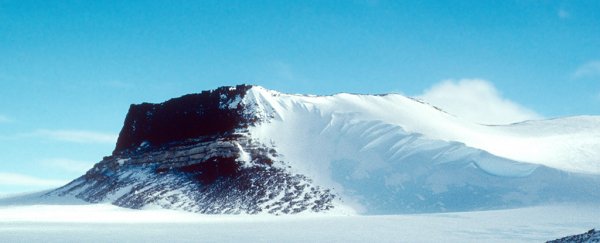Scientists think they might have solved one of Antarctica's longest-standing mysteries - but the discovery doesn't bode too well for the future of the ice-covered continent.
At the centre of the mystery is a group of fossilised remains left behind by tiny, single-celled algae called diatoms. How these microscopic marine organisms got where they are today - the lofty peaks of the Transantarctic Mountains - has been the source of debate for more than 30 years.
Now, thanks to a new computer model, researchers from across the US have found evidence to suggest that the diatoms found their high-altitude home due to a significant glacial retreat. And if it's happened before, it could happen again.
"Studies like this show that pretty dramatic changes in sea level can take place on human timescales," says lead researcher Reed Scherer, a geologist from the Northern Illinois University.
Previously, there have been two main hypotheses for how the diatoms rose more than a mile above sea level in the Antarctic.
The 'dynamicist' hypothesis suggests that they travelled as glaciers collapsed during an ancient shift from a hotter to a cooler climate. Meanwhile, the 'stabilist' argument is that strong winds whipped the diatoms up to their present position.
Why does it matter? Well, the two hypotheses take contrasting views about whether the East Antarctic sheet disintegrated or held firm during the Pliocene era, which lasted between 5.3 million and 2.6 million years ago, when our planet was around 2-3 degrees Celsius warmer than it is now.
If the stabilists are right, then Antarctica's giant ice shelves might be able to survive a sharp temperature rise. But If the dynamicists are right, this is much less likely, based on the planet's behaviour in the past.
The new computer model actually suggests that both sides are partly correct, finding that both shifting glaciers and strong winds contributed to the diatoms' movement.
But to the extent that shifting glaciers were responsible, it's all bad news, because if the East Antarctic sheet is as unstable as this model suggests, a significant sea level rise could be on the cards in the future.
"What makes this kind of study more important and relevant is the idea that as ice retreats, sea level rises," says Scherer. "And so much of the world's population lives near the coastline."
The new modelling takes into account the climate conditions of the Pliocene era and what the researchers call "isostatic rebound", where land mass rises as heavier surface ice disappears.
And it's that isostatic rebound that's crucial here, with retreating ice transporting dead diatoms to the surface, from where they can then be carried further by the wind.
"This is another piece of a jigsaw puzzle that the community is rapidly putting together, and which appears to show that the ice sheets are more sensitive to warming than we had hoped," says another of the team Richard Alley, a climate scientist from Pennsylvania State University.
According to Scherer, we can mitigate the extent of this happening in the future through cuts in carbon dioxide emissions, which can slow sea level rises manageable levels, even if it's now impossible to stop them completely.
The alternative, he says, is unthinkable. "Do we really want to wait until no one can deny it anymore?"
The findings are published in Nature Communications.
